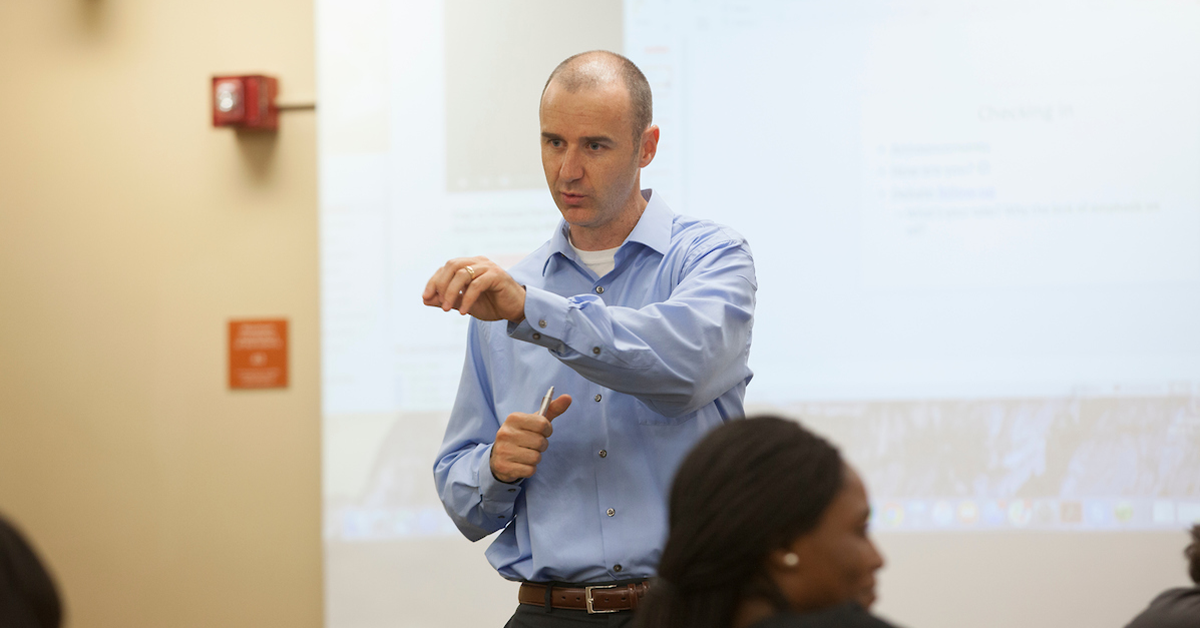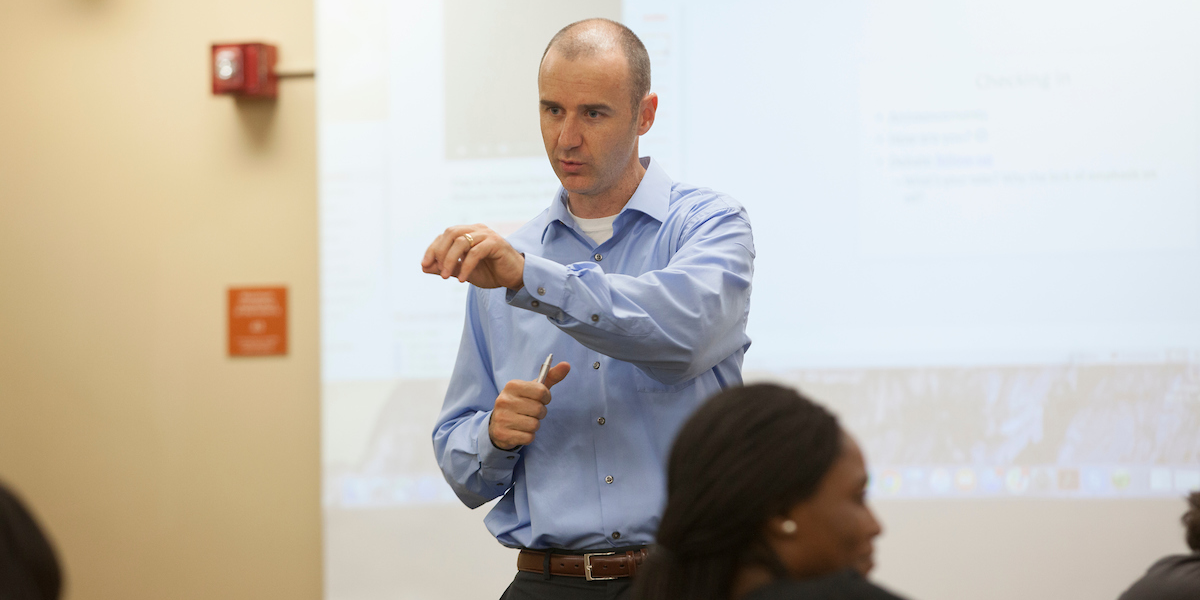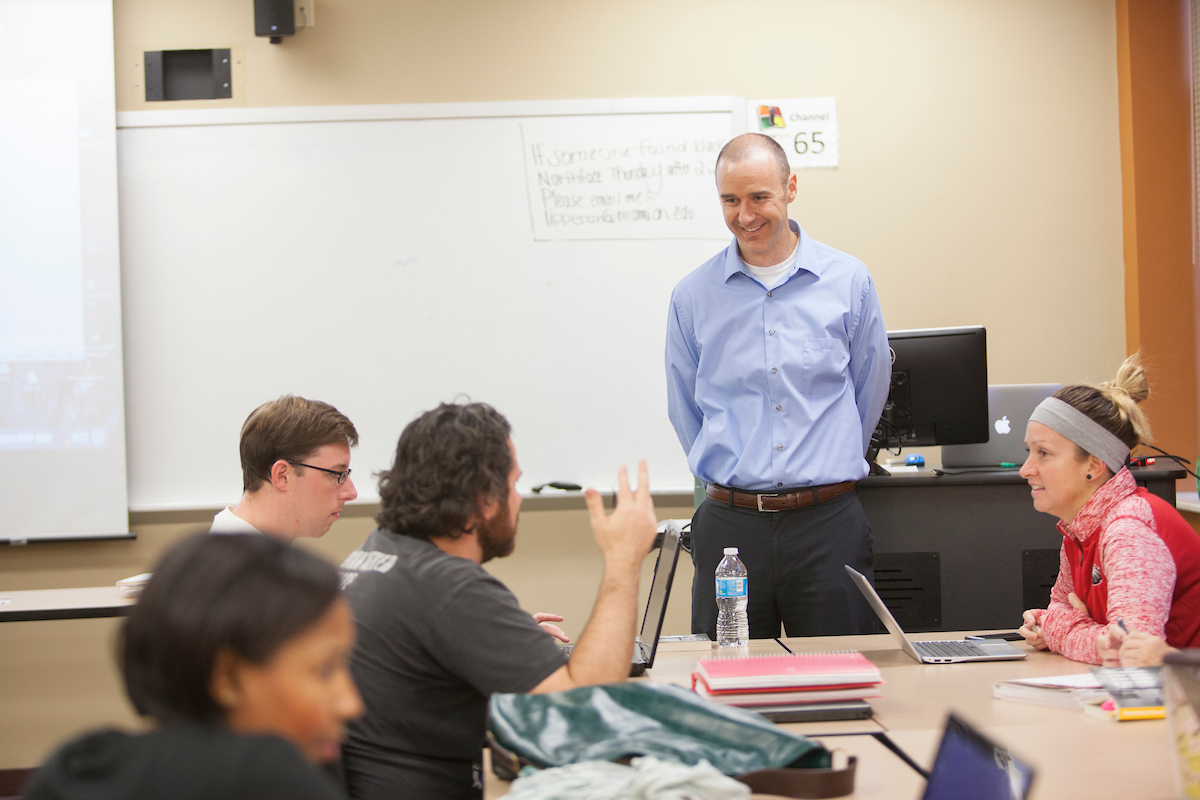Skilled Cross-Sector Collaborators Can Help Schools Succeed


James M. Loy, Miami University
“We’re looking with fresh eyes at those individuals and entities that reside in the in-between space in education,” says Joel Malin, Miami University assistant professor of educational leadership.
These spaces in-between, those nebulous expanses that must be bridged before people or ideas from one area can cross over into another, are often left out of conversations involving social progress or change. But those who can successfully span boundaries and connect diverse organizations and social structures can help solve complex problems.
Related to this interest, Malin and colleague Don Hackmann (University of Illinois professor of educational leadership and policy) have recently completed and published a study of cross-sector collaboration and integrative leadership surrounding an ambitious high school reform initiative in Educational Administration Quarterly, one of the leading journals in the field.
Collaborators matter
Malin and Hackmann studied how cross-sector collaborators enabled one urban school district to create and maintain a sprawling and successful “college and career readiness” reform by building career academies that partnered a dozen high schools with the local business community, higher education entities, non-profits, and civic organizations.
Because high school diplomas no longer hold the same value they once did, schools are facing more pressure to prepare students for the future, which means career and college readiness is becoming a critical issue facing both educators and policymakers.
A college degree is now generally viewed as a more viable path into the middle class. However, college is not the only way to start a successful career. Skilled labor is also an option, but these professions still tend to require some form of postsecondary training.
Faced with this reality, many high schools have created two separate, diverging, vocational and
 Joel Malin “That’s been a longstanding issue in U.S. education,” Malin says. “So one of the rationales for career academies and similar reforms would be to try to break down those silos, or those separate tracks, and create a situation where academic and career and technical education programming are more integrated.”
Joel Malin “That’s been a longstanding issue in U.S. education,” Malin says. “So one of the rationales for career academies and similar reforms would be to try to break down those silos, or those separate tracks, and create a situation where academic and career and technical education programming are more integrated.”
And one way to bridge this divide, Malin argues, is to rely on effective collaborators who can move fluidly between different sectors.
“To implement a career academy really well requires not only strong curriculum in schools, and getting students on a path where they can understand what it takes to succeed in a certain career area,” says Malin. “But out of school, it requires work-based learning opportunities and internships. And that requires really good partnerships and collaborations with local businesses and non-profits, with higher education entities, and civic organizations.”
For over 15 months, Malin and Hackmann worked with a large school district in the Southern U.S. to conduct interviews, make observations, and to analyze civic reports, school documents, and official websites.
After examining the data, they concluded that cross-sector leaders were vital to the launch and longevity of a career academy program that “has impressively matured and strengthened over a 10-year period.”
Cross-sector leaders not only helped develop more relevant curricula by better understanding local economic conditions and employment needs
In the 10 years since the career academy’s launch, this school district also tracked a 23% increase in the annual graduation rate and a 4% increase in attendance, as well as “double-digit percentage declines in discipline referrals, in-school suspensions, and out-of-school suspensions.”
Among the first in education
Comparable findings highlighting the significance of cross-sector collaborators have already been established in other fields such as public administration, where civic and political leaders must routinely move between public and private sectors.
 Malin and Hackmann, however, are among the first to study this concept in an educational context, and particularly from a leadership and organizational/structural perspective.
Malin and Hackmann, however, are among the first to study this concept in an educational context, and particularly from a leadership and organizational/structural perspective.
“Cross-sector collaborations are becoming more and more frequent in education and we need to understand them,” Malin says. “We need to map them out, understanding the conditions within which they can be successful, including key organizational features and the types of leadership skills/approaches that are desirable within these complex configurations.”
This particular case study is
Until then, their findings are already useful for schools that may need to implement complex reform initiatives, particularly specific types of college and career readiness reforms at the secondary level. And, more broadly, their findings speak to ways in which the roles of educational professionals are evolving as well.
“What does that mean for principals?” Malin explains. “Does this mean they need different skills and that you need to pursue different strategies? Maybe they weren’t trained to work within cross-sector configurations. So they may need to think differently about how you cross boundaries and work with diverse parties or diverse people.”
Today, more schools may need to look beyond their own walls to better serve students.
According to Malin and Hackmann, leading across organizational boundaries is increasingly crucial for positive change and progress. The partnerships these leaders can help establish make it possible to accomplish together what it would be far more difficult to do alone.

